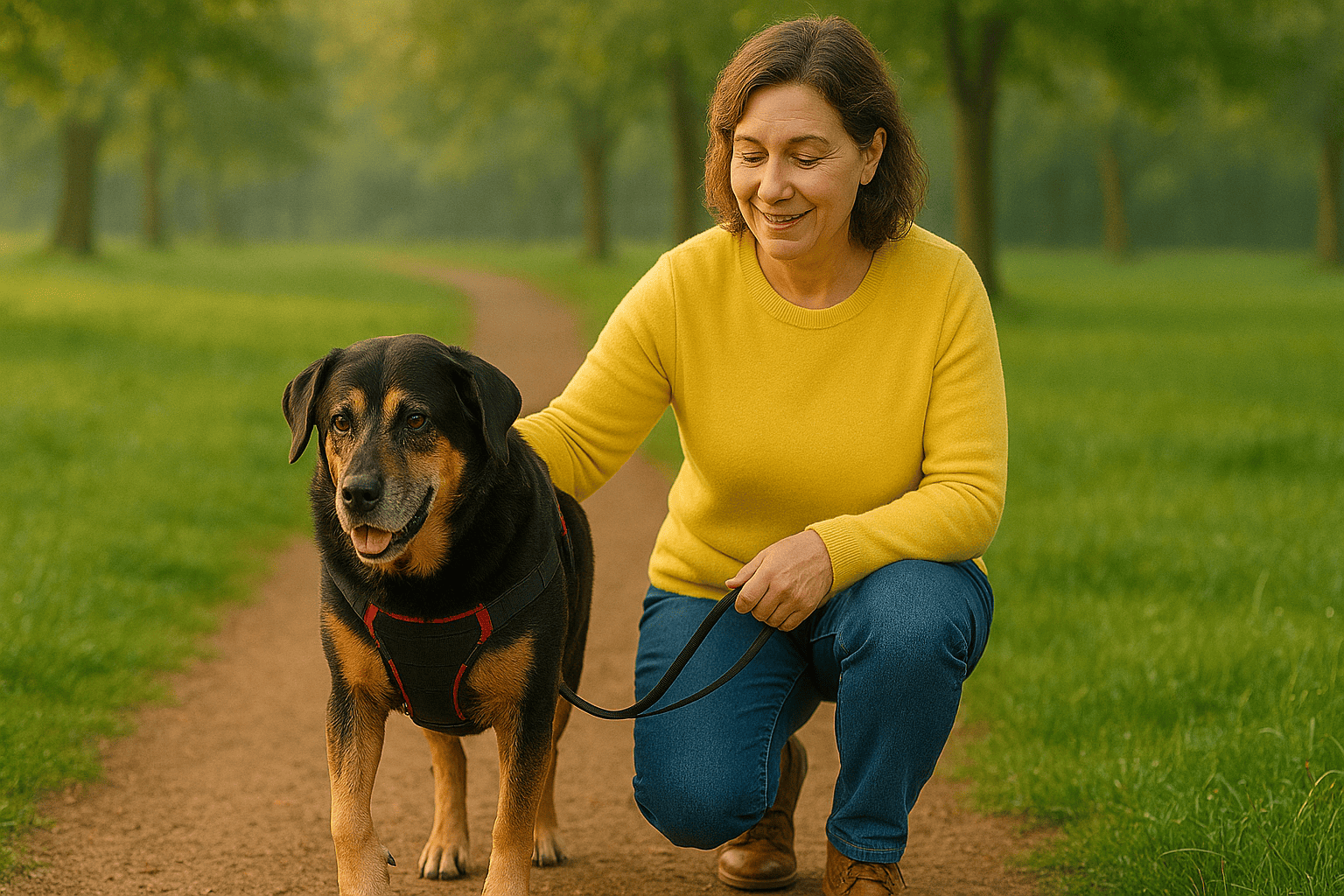Introduction
Arthritis can make daily activities challenging for senior dogs, but safe walks remain a key way to maintain their health and happiness. Gentle walks support muscle strength, joint flexibility, and mental well-being without worsening joint pain. By adapting your walking routine, you can help your dog stay active and enjoy outings comfortably. This article shares seven essential tips for planning safe walks for senior dogs with arthritis, ensuring they remain mobile and content while managing their condition.
Why Walking Matters for Arthritic Dogs
Safe walks for senior dogs with arthritis are vital for their physical and emotional health. Regular, gentle movement strengthens muscles, which support aching joints, and promotes flexibility to reduce stiffness. Walks also boost mood, helping dogs feel engaged and less stressed by chronic pain. However, without proper care, walking can strain joints, so tailored adjustments are crucial to keep outings safe and enjoyable.
Seven Tips for Safe and Comfortable Walks
1. Choose Soft, Even Surfaces
Select walking paths with soft surfaces like grass, dirt trails, or park lawns instead of hard concrete sidewalks. These surfaces cushion each step, reducing impact on your dog’s arthritic joints and preventing discomfort.
- Why it helps: Soft ground absorbs shock, protecting joints from strain.
- Examples: Grassy parks, forest trails, or rubberized paths.
2. Keep Walks Short and Frequent
Long walks can overexert senior dogs with arthritis. Instead, plan multiple short walks (5–10 minutes) throughout the day to maintain mobility without fatigue.
- Why it helps: Short sessions prevent joint overuse while promoting consistent activity.
- Tip: Adjust walk length based on your dog’s energy level.
3. Warm Up and Cool Down
Start walks with gentle stretches or a slow pace to warm up your dog’s muscles, preparing joints for movement. End with a slower pace to cool down and avoid post-walk stiffness.
- Why it helps: Warm-ups reduce injury risk, and cool-downs prevent muscle tightening.
- Example: Spend 1–2 minutes walking slowly at the start and end.
4. Monitor Weather Conditions
Extreme heat or cold can worsen arthritis pain, as arthritic joints are sensitive to temperature changes. Avoid walks during harsh weather to keep your dog comfortable.
- Why it helps: Stable temperatures reduce joint inflammation and discomfort.
- Tip: Walk during mild morning or evening hours in summer.
5. Use a Supportive Harness
A well-fitted harness provides better support than a collar for senior dogs with arthritis. Mobility harnesses distribute weight evenly, reducing strain on joints.
- Why it helps: Harnesses minimize neck and back pressure during walks.
- Recommendation: Look for padded harnesses designed for senior dogs.
6. Watch for Signs of Fatigue or Pain
Pay close attention to your dog’s behavior during walks. Signs like limping, slowing down, or hesitation indicate discomfort. Stop immediately and let your dog rest if these appear.
- Why it helps: Early intervention prevents overexertion and injury.
- Action: Shorten or skip walks if your dog seems tired or sore.
7. Stay Consistent with Walks
Regular, short walks are more effective than occasional long ones. Build a daily routine tailored to your dog’s energy and health for sustained benefits.
- Why it helps: Consistency maintains muscle strength and joint mobility.
- Tip: Schedule walks at the same time daily for routine comfort.
Bonus Tip: Make Walks Positive
Turn walks into a joyful experience for your senior dog. Bring healthy treats to reward them and celebrate small milestones, like reaching a favorite spot.
- Why it helps: Positive reinforcement boosts your dog’s mood and motivation.
- Idea: Use low-calorie treats to keep walks fun and healthy.
Veterinary Guidance for Safe Walks
Before adjusting your senior dog’s walking routine, consult a veterinarian. They can assess your dog’s arthritis severity and recommend personalized walking plans, ensuring safe walks for senior dogs with arthritis. Vets may also suggest complementary treatments, such as:
- Physical therapy to improve mobility
- Joint supplements to reduce inflammation
- Pain management strategies for comfort
Professional guidance ensures your walking routine supports your dog’s health without risks.
Conclusion
Safe walks for senior dogs with arthritis are a wonderful way to keep your pet active, happy, and healthy. By choosing soft surfaces, keeping walks short, and using supportive gear, you can make outings comfortable and enjoyable. Combine these tips with veterinary advice to create a walking routine that enhances your dog’s quality of life. Try these strategies today and share your dog’s walking adventures in the comments!

